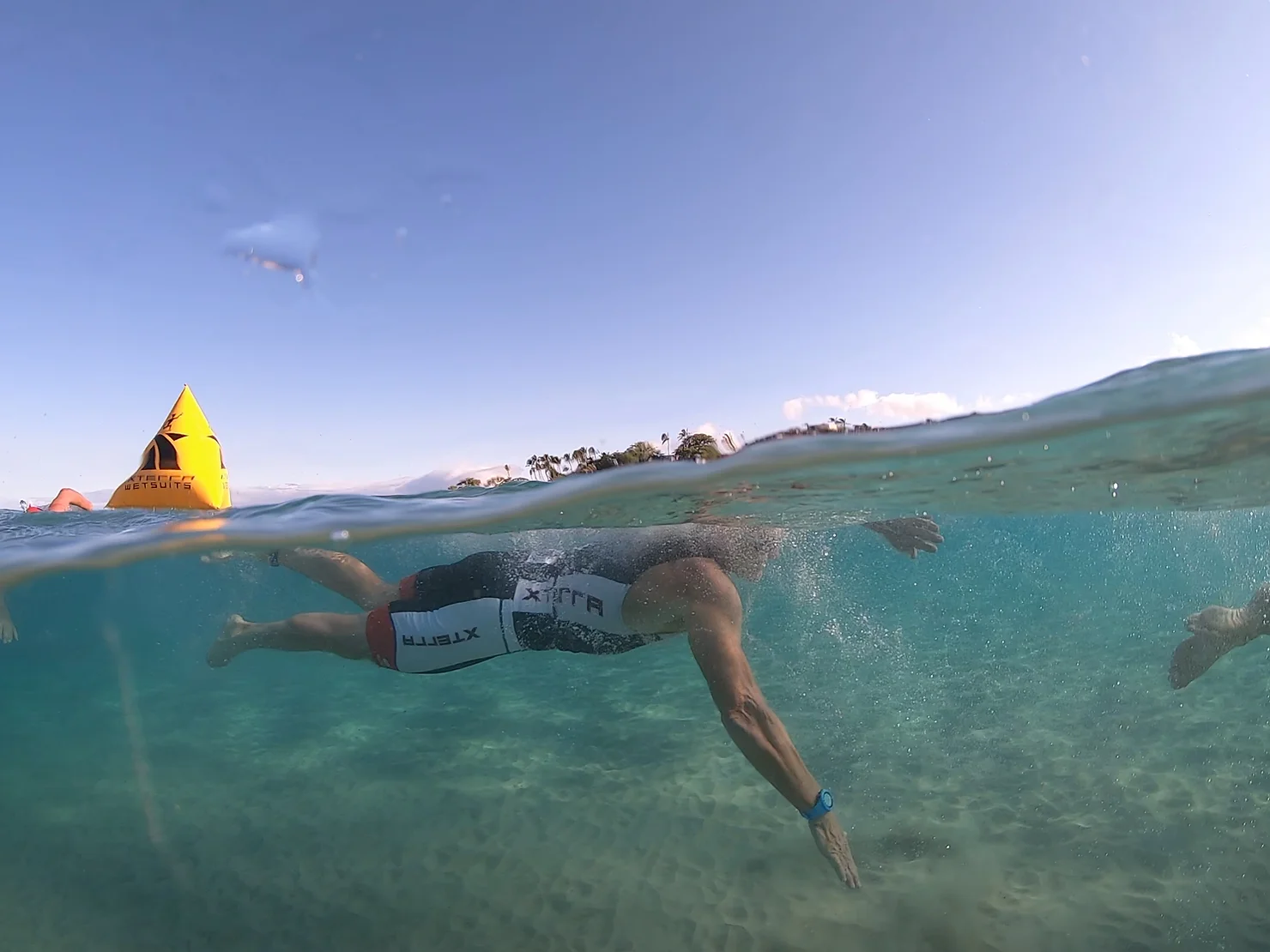Forceful Swimming – Stop Swimming like a Swimmer

In the 25 years that I have been coaching open water swimmers there is one thing that still frustrates me – and that is that many swim coaches are training their triathletes in pool swimming techniques.
A triathlete, or open water swimmer, does not participate in the same sport as a pool swimmer. They are two completely different disciplines.
Trying to train a newcomer to the sport of triathlon in the same techniques developed by elite swimmers who have trained for 10 plus years doing 50 plus kilometers a week in the pool is not feasible.
Not only is an effective stroke in the pool not effective in the open water, but a triathlete competes in one sport – which consists of swimming, cycling, and running – not 3 sports done one after each other – so the swim needs to fit into the overall strategy of the single sport of triathlon.
Take one simple example – the kick of an elite pool swimmers. To drive their arm stroke they need to maintain a strong 6-beat kick that provides constant forward propulsion. Without a strong 6-beat kick most elite swimmers would need to adjust their arm stroke to something less symmetrical, and they would certainly have to abandon the glide phase of the stroke. While some top Olympic triathletes can maintain a 6-beat kick over the shorter distances the rest of us cannot. The demand for oxygen is too great for everyone except the most talented of athletes, and a strong kick would tire the legs and impact performance for the rest of the race.
Also, ocean, river or lake conditions often make it difficult to maintain perfect form, and sighting ruins even the most perfect of strokes.
For anyone who started the 2023 Ironman Philippines races in Subic Bay you will remember how quickly you had to forget about swimming perfectly and just get on with the job of swimming – the ocean conditions were that bad!
Many years ago I developed an open water swim stroke that I describe as Forceful Swimming. This technique has also been used by some other well-known coaches as well, including Doc Brett Sutton.
My Forceful Swimming technique is based on power, alignment, and balance, with an emphasis on power.
Distance triathletes typically have a weak 2-beat kick, which means that 90+% of their forward movement comes from the arms. To be a fast swimmer you need strength – power – and a lot of it. If you do not have the strength to pull your arms through the water quickly, you will never swim quickly. A strong swim is strength based! And, I might add, it requires a more aggressive stroke than pool swimming does.
The legs provide balance, and minimal forward thrust. The stroke begins and drives from the hips. The body has a slight roll as each arm reaches forward, more roll on the breathing side. The arms reach forward, the hands “grab” water like a big paddle, and pull and then push that water out the back. Overhead arm recovery is not important as long as it does not bring the body out of alignment. In other words, you do not need a perfect, high elbow arm recovery as long as you bring your arms up and over to start a new stroke quickly, and your arm recovery does not make your hips or legs wiggle out of alignment. Alignment – or being streamlined – is critical in being as efficient as you can be. The less resistance you create in the water, the less work goes into fighting your way through the water, so the faster you are, and the less fatigued you will be for the rest of the race. Core strength helps you to keep your body fluid, relaxed and aligned while you generate the power needed to have a strong stroke.
Your stroke does not have to be symmetrical – each arm can behave differently. You can breathe to one or both sides.
As long as your legs stay aligned with your body, and provide balance, as long as you drive from the hips, reach, pull and push forcefully with your arms, and as long as you have a high enough stroke rate, you will be fast under all conditions.
And, train for sighting. Develop a stroke that allows you to sight every 4 to 8 strokes if needed. This means you will need a strong back…looking up every few seconds has destroyed many athlete’s chances of a good race as its impossible to generate power on the bike with a sore or tired lower back.
So, what is the take-away here…it is to stop trying to swim like a swimmer. Train to swim like a triathlete. It is a different sport, and requires different skills.
Find a coach who understands the demands of open water swimming. Find a trainer who understands the muscle chains required for forceful swimming – get into the gym and build some power. Train often in open water, and practice sighting. And stop thinking in terms of becoming a better swimmer – work on becoming a better triathlete by developing a forceful open water swim stroke.










